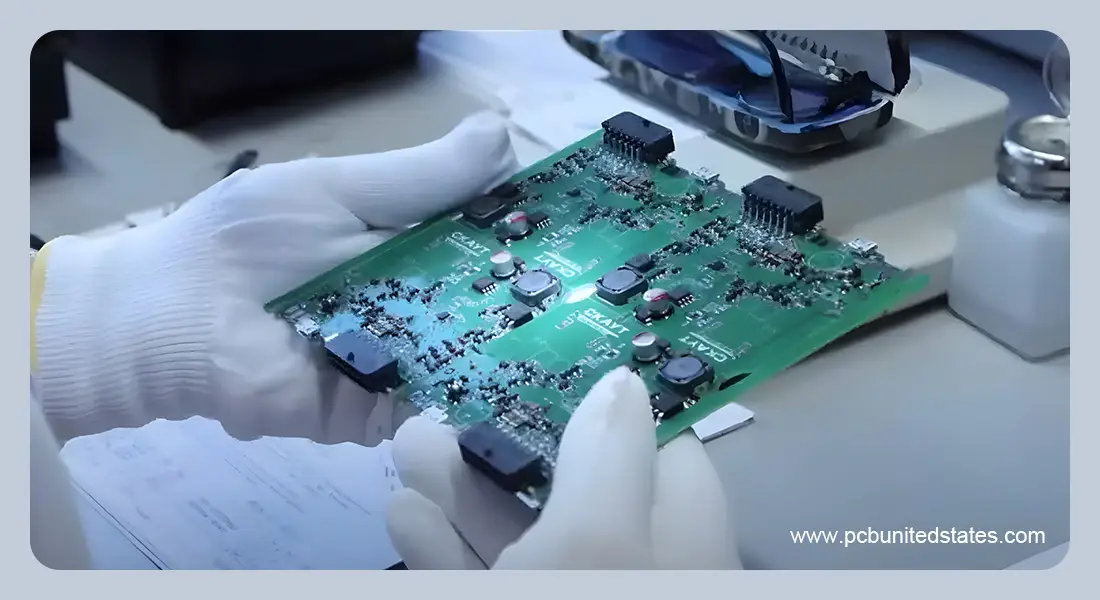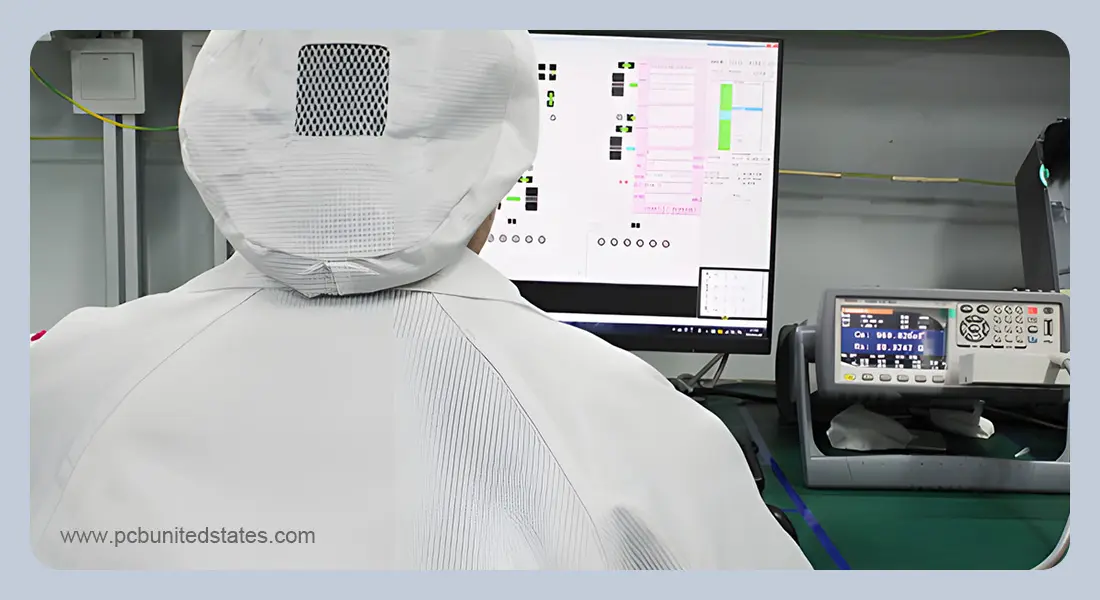First Article Inspection (FAI)
Getting your PCB right the first time isn’t just good business—it’s essential for survival in today’s competitive electronics market. One defective board that slips through to mass production can cost thousands in scrap materials, delayed shipments, and damaged customer relationships. That’s where First Article Inspection (FAI) becomes your quality insurance policy.
What Is First Article Inspection in PCB?
First Article Inspection (FAI) is a quality control process that is conducted during PCB manufacturing. This method checks the first completed PCB board to verify that it is produced according to all the design and production requirements. As they discover defects in the earliest possible moment, PCB manufacturers avoid the costs of reworking, reduce the lead time, and make sure that every next production phase is organized according to the confirmed procedure. Whether proposing a new product, or implementing a change to the design, you should know how the First Article Inspection process works so as to get high-quality and reliable printed circuit boards.

Main Procedures of PCB First Article Inspection
In PCB manufacturing, FAI typically includes:
- First-piece verification: Confirms that the very first board from a new product or process meets all design specifications so it can be used safely and reliably.
- Component installation inspection: Ensures every component on the PCBA is correctly placed and securely mounted.
- Soldering quality test: Examines solder joints to rule out defects such as cold joints, bridging, or voids.
- Electrical test: Perform electrical tests on the PCBA to ascertain whether the circuit connections are done correctly and that the electrical performance is as required.
- Functional testing: This test is performed to ensure that the board works in a real operating environment as expected.
- Data analysis and recording: Store and record the data and statistics of the first-piece inspection for later analysis and traceability.
When Is First Article Inspection Required?
Although FAI is useful to any project, it is required in instances where the risk of deviation is greater and this includes:
- New Product Introduction (NPI): When developing a new product, performing 1st article inspection is necessary.
- Engineering or Design Changes:Important changes in the number of layers, part layout or other important features.
- Process or Supplier Changes:1stArticle Inspection is necessary when you cooperate with new manufacturers or material suppliers. In addition, moving to a new facilities also requires the FAI.
- Regulatory or Customer Requirements:Aerospace, medical, automotive, and defense markets usually require FAI documentation to be part of their quality standards.
The Importance of the PCB First Article Inspection Process
Early Defect Detection: Problems like layout, component placement problems or soldering issues can be detected before the mass production and avoid significant failures on a large-scale basis.
Cost and Time Savings: Early detection of defects will save money by avoiding expensive rework, scrap, and warranty. In addition, it helps to keep the production schedules on track.
Process Validation: Assures that the manufacture environment in terms of equipment settings, reflow settings and assembly procedures can be utilized to create boards repeatedly that adhere to design specifications.
FAI vs. PPAP: Key Differences and Use Cases
You may hear PPAP (Production Part Approval Process) mentioned alongside FAI.
Although the two are concerned with quality prior to mass production, they are used for different purpose:
| Aspect | First Article Inspection (FAI) | Production Part Approval Process (PPAP) |
|---|---|---|
| Primary Goal | Validate the first manufactured unit meets all design specifications | Demonstrate the entire production process consistently produces conforming parts |
| Scope | Focuses on a single first article sample | Covers ongoing process capability and statistical control |
| Documentation | Dimensional reports, material certifications, test results | Detailed control plans, process flow diagrams, capability studies |
Forms of a First Article Inspection Report
A first article inspection report (FAIR) is a document that grants acceptance that all samples have been produced and checked in accordance with the customer’s requirements.
This report comes in three forms—Form 1, Form 2, and Form 3. In addition, all three forms provide a complete account of the production process.
Form 1 (Part number accountability)
Form 1 keeps the information on the part number under inspection and establishes traceability within production. Its main purposes include:
Connecting the inspected part to the overall manufacturing process.
Keeping track of any engineering change orders that may affect the design.
Linking the parent FAI to all the sub-components that are part of the assembly.
Form 2 (Product accountability)
Form 2 documents raw material, special processes and function testing that would be involved in manufacturing the part.
It is normally divided into two parts:
Raw Materials and Special Processes: Lists the materials and any special treatments used.
Functional Testing: Records the results of the functional tests to ensure that the part is working as expected.
Form 3 (Characteristics Accountability)
Form 3 contains all the important material and functional features of the part.
The parameters, which can number in the hundreds for a complex PCB, should be listed with the balloon number or characteristic name.
Supporting records, including the drawing sheet and characteristic designators, help ensure that all features can be traced and verified against the design requirements.
Step-by-Step Guide to Creating Your First Article Inspection Report
Step 1: Pre-Planning and Documentation Gathering
Gather all necessary documentation, including:
- Technical specifications and requirements
- Records of suppliers and sources
- Complete raw materials list
- Engineering drawings and CAD files
- Datasets of digital product definition
- Detailedmanufacturing plans
Step 2: Develop Your Inspection Plan
Balloon your part drawings to identify inspection requirements
Prepare AS9102 forms for systematic documentation
Complete Forms 1 and 2 using specifications and bill of materials
Fill out Form 3 with inspection tools, dimensions, and tolerance notes
Document serial numbers and tool types for traceability
Step 3: Manufacturing and Process Documentation
Produce the first article while carefully documenting all processing steps and inspection results throughout the manufacturing process.
Step 4: Data Collection and Inspection
Conduct thorough inspection using approved measurement tools while maintaining detailed traceability records linking tools to qualified operators.
Step 5: Report Compilation and Delivery
Complete measurement data entry in AS9102 Form 3 and compile supporting documentation including Certificate of Conformance and Functional Test Reports.
First Article Inspection at MOKOPCB

First Article Inspection is one of the core quality management processes at MOKOPCB. To verify every critical feature of the first PCB assembly, our Shenzhen factory is equipped with advanced inspection machinery, such as Automatic X-ray Inspection (AXI), Automated Optical Inspection (AOI), and high-precision measurement equipment.
Our FAI process includes:
Detailed Pre-Production Check: Verification of customer Gerber files, BOMs, and assembly drawings.
Precision Inspection: AOI and X-ray inspection to verify solder joints, BGA, and concealed connections.
Comprehensive Reporting: Providing dimensional information, test results, and clear photographs to customers for approval.
Traceability & Compliance: Adherence to IPC, ISO 9001, and customer-specific standards for complete documentation.
Through FAI, prior to full production, MOKOPCB can assure all PCB projects—whether rapid prototyping or mass production—of the highest quality, performance, and reliability.
Contact Us
Got any questions or inquiries? Fill out the form and we will get back to you soon

